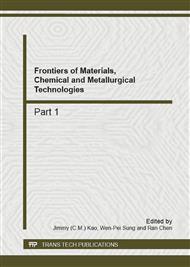p.341
p.345
p.349
p.353
p.359
p.363
p.368
p.373
p.378
Effect of Contact Characteristics on the Friction and Wear Behaviors of Stainless Steel/Copper-Impregnated Metalized Carbon under Electric Current
Abstract:
Influence of the support stiffness and contact force on friction and wear behaviors of stainless steel rubbing against copper-impregnated metalized carbon under electric current was researched on an improved friction and wear test machine. The result indicates that the support stiffness and the contact force significantly affect the friction coefficient of contact pairs, wear and surface roughness of pin samples. The appropriated support stiffness and contact force can effectively reduce friction material wear of contact couple.
Info:
Periodical:
Pages:
359-362
Citation:
Online since:
October 2012
Authors:
Price:
Сopyright:
© 2012 Trans Tech Publications Ltd. All Rights Reserved
Share:
Citation:


